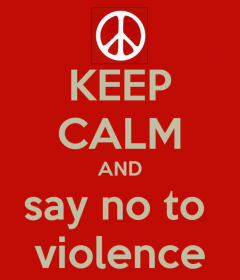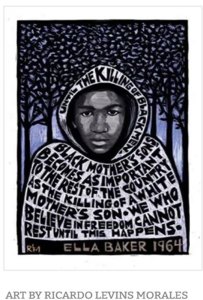Proactive violence prevention starts with schools, colleges, churches and employers initiating conversations about mental health and establishing systems for identifying individuals in crisis, reporting concerns and reaching out — not with punitive measures but with resources and long-term intervention. Our data unveiled four commonalities of mass shooters
We believe that analyzing and understanding data about who commits mass shootings can help prevent more lives being lost.
For two years we’ve been studying the life histories of mass shooters in the United States for a project funded by the National Institute of Justice, the research arm of the U.S. Department of Justice. We’ve built a database dating back to 1966 of every mass shooter who shot and killed four or more people in a public place, and every shooting incident at schools, workplaces and places of worship since 1999.
We’ve interviewed incarcerated perpetrators and their families, shooting survivors and first responders. We’ve read media and social media, manifestos, suicide notes, trial transcripts and medical records.
Our goal has been to find new, data-driven pathways for preventing such shootings. Although we haven’t found that mass shooters are all alike, our data do reveal four commonalities among the perpetrators of nearly all the mass shootings we studied.
First, the vast majority of mass shooters in our study experienced trauma and exposure to violence at a young age. The nature of their exposure included parental suicide, physical or sexual abuse, neglect, domestic violence and/or severe bullying. The trauma was often a precursor to mental health concerns, including depression, anxiety, thought disorders or suicidality.
Second, practically every mass shooter we studied had reached an identifiable crisis point in the weeks or months leading up to the shooting. They often had become angry and despondent because of a specific grievance. For workplace shooters, a change in job status was frequently the trigger. For shooters in other contexts, relationship rejection or loss often played a role. Such crises were, in many cases, communicated to others through a marked change in behavior, an expression of suicidal thoughts or plans, or specific threats of violence.
Third, most of the shooters had studied the actions of other shooters and sought validation for their motives. People in crisis have always existed. But in the age of 24-hour rolling news and social media, there are scripts to follow that promise notoriety in death. Societal fear and fascination with mass shootings partly drives the motivation to commit them.
Hence, as we have seen in the last week, mass shootings tend to come in clusters. They are socially contagious. Perpetrators study other perpetrators and model their acts after previous shootings. Many are radicalized online in their search for validation from others that their will to murder is justified.
Fourth, the shooters all had the means to carry out their plans. Once someone decides life is no longer worth living and that murdering others would be a proper revenge, only means and opportunity stand in the way of another mass shooting. Is an appropriate shooting site accessible? Can the would-be shooter obtain firearms?
Subscribe to RiseUpTimes.org Support independent media.
Donate Now!
In 80% of school shootings, perpetrators got their weapons from family members, according to our data. Workplace shooters tended to use handguns they legally owned. Other public shooters were more likely to acquire them illegally.
So what do these commonalities tell us about how to prevent future shootings?
One step needs to be depriving potential shooters of the means to carry out their plans. Potential shooting sites can be made less accessible with visible security measures such as metal detectors and police officers. And weapons need to be better controlled, through age restrictions, permit-to-purchase licensing, background checks, safe storage campaigns and red-flag laws — measures that help control firearm access for vulnerable individuals or people in crisis.
Another step is to try to make it more difficult for potential perpetrators to find validation for their planned actions. Media campaigns like no-notoriety are helping starve perpetrators of the oxygen of publicity, and technology companies are increasingly being held accountable for facilitating mass violence.
But we all can slow the spread of mass shootings by changing how we consume, produce and distribute violent content on media and social media. Don’t like or share violent content. Don’t read or share killers’ manifestos and other hate screeds posted on the internet.
We also need to study our current approaches. For example, do lockdown and active-shooter drills help children prepare for the worst, or hand potential shooters the script for mass violence by normalizing or rehearsing it?
We also need to, as a society, be more proactive. Most mass public shooters are suicidal, and their crises are often well known to others before the shooting occurs. The vast majority of shooters leak their plans ahead of time. People who see or sense something is wrong, however, may not always say something to someone owing to the absence of clear reporting protocols or fear of overreaction and unduly labeling a person as a potential threat.
Proactive violence prevention starts with schools, colleges, churches and employers initiating conversations about mental health and establishing systems for identifying individuals in crisis, reporting concerns and reaching out — not with punitive measures but with resources and long-term intervention. Everyone should be trained to recognize the signs of a crisis.
Proactivity needs to extend also to the traumas in early life that are common to so many mass shooters. Those early exposures to violence need addressing when they happen, with ready access to social services and high-quality, affordable mental health treatment in the community.
School counselors and social workers, employee wellness programs, projects that teach resilience and social emotional learning, and policies and practices that decrease the stigma around mental illness will not just help prevent mass shootings, but will also help promote the social and emotional success of all Americans.
Our data show that mass shooters have much in common. Instead of simply rehearsing for the inevitable, we need to use that data to drive effective prevention strategies.
Jillian Peterson is a psychologist and professor of criminology and criminal justice at Hamline University. James Densley is a sociologist and professor of criminal justice at Metropolitan State University. Together, they run the Violence Project. They wrote this article for the Los Angeles Times.
Excerpt: We’ve studied every mass shooting since 1966 and found similarities that can help prevent future attacks.
◊
Truth is not fake news. Justice is not fake news. Please support Rise Up Times now and share articles widely. The people, Yes!
◊
The contents of Rise Up Times do not necessarily reflect the views of the editor. Articles are chosen for republication based on the interest of our readers. Rise Up Times republishes articles from a number of other independent news sources as well as original articles and stories.
4 Comments
Comments are closed.




“Intervention” often provokes the massacre:
http://www.kwesthues.com/vtmassacre.htm
This article is very flawed in that it’s careful to not make any connections to the epidemic of mass shootings and unprecedented increase in suicides in the U.S. with the country’s 19 years of perpetual war. Even though this omission is an obvious and documented correlation if not a causal factor. Also the reason it’s not possible to predict suicide with any accuracy is that this type of profiling has to be compared to the general population of non mass shooters.
“But it’s also possible that being trained and conditioned and given a familiarity with mass shootings — and in some cases an experience of engaging in mass shooting and having it deemed acceptable or praiseworthy — makes one more likely to mass shoot. I cannot imagine there isn’t truth in that.” -David Swanson in http://davidswanson.org/updated-data-mass-shooters-still-disproportionately-veterans/
I hope you have sent your comments on to the authors. It should be easy to find academic addresses for since they are both local to the Twin City area.
Read; TOXIC PSYCHIATRY by Dr. Peter Breggin.Kay